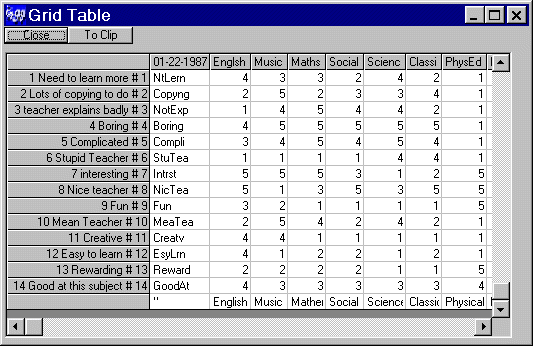In Ingrid98 the following table method of grid input was accompanied with a feature/cell method of input to allow for large grid entry. (A "D/d" entered in the score field allowed a name look up. U/u and R/r also worked as input aids.)

This Option allowed you to enter both the names of the elements and constructs as well as the value for each cell.
As of Ingrid98.e for a time only a selected row or column with one cell at a time could be entered. You were editing directly into the input text file and this form of input was really useful for rotating columns and rows to the end for later exclusion.
Both Element NAMES and CONSTRUCT NAMES are LABELS which were six characters in length. It was therefore useful to include a full explanation of what each meant. In this example the element's explanations are:-
Englsh English Literature
Music Music Lessons
Maths Mathematics
Social Social Studies
Scienc Science
Classi Classical Studies
PhysEd Physical Education
Relign Religion
Health Health
Drama Drama
Comput Computing
Art Art
Cookng Cooking
Sewing Sewing
